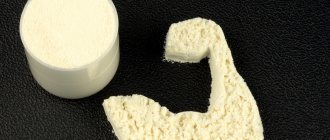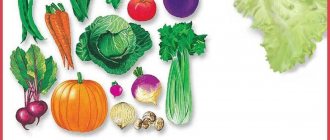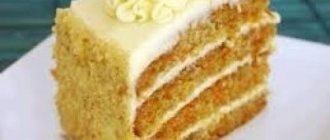One of the most successful Lenten dishes is hummus. It is made from chickpeas, with the addition of tahini, sesame paste and oil; in addition, garlic and lemon juice are often added to hummus. Chickpeas are an excellent source of vegetable protein and vitamins, including B vitamins.
Article on the topic Fish steak and a glass of wine. What can you eat during the Nativity Fast? Hummus can be eaten as a snack, you can make sandwiches with it, spread it on tortillas and add vegetables, or use it as a thick sauce for baked or fresh vegetables. It turns out to be both satisfying and healthy, and replenishes the protein deficiency characteristic of nutrition during the fasting period.
Tahini paste
It is made from sesame seeds, olive oil, and spices. In stores, this paste is sold ready-made; it can be bought in large supermarkets, stores selling national products, spices, and ordered in online stores. It’s difficult to make real tahini at home; you have to grind the sesame seeds very finely, which homemade equipment is usually not capable of. But you can make a homemade analogue by grinding sesame seeds, cumin, black pepper and a little sea salt in a coffee grinder or food processor, then add olive oil and a little sesame oil and beat well.
Response to glucose and insulin
Chickpeas have a low glycemic index, but very few studies have assessed the glycemic effects of hummus in vivo. In one study, postprandial glucose responses were four times lower than those of white bread in a study of 10 healthy people consuming hummus. Blood glucose levels were significantly lower after 45 minutes when subjects were given hummus with 25 grams of available carbohydrates (in the form of white bread), compared to 25 grams of carbohydrates alone (Note: no differences in blood glucose levels were found across time periods up to 45 minutes after consumption). This suggests that hummus is able to partially attenuate the glycemic response of higher glycemic index foods when consumed together.
Augustin LS, Chiavaroli L., Campbell J., Ezatagha A., Jenkins AL, Esfahani A., Kendall CW Post-prandial glucose and insulin responses of hummus alone or combined with a carbohydrate food: A dose-response study. Nutr. J. 2016;27:13.
When taken chronically, chickpeas also significantly improved glycemic control in a 20-week crossover study of 45 people with elevated cardiovascular disease (CVD) risk factors. Pittaway JK, Robertson IK, Ball MJ Chickpeas may influence fatty acid and fiber intake in an ad libitum diet, leading to small improvements in serum lipid profile and glycemic control. J. Am. Diet. Assoc. 2008;108:1009–1013.
Men who ate chickpeas or lentils with pizza had lower blood glucose responses compared to those who ate yellow peas with pizza. In a study by Yang et al. Chickpeas have been shown to significantly improve insulin resistance and prevent postprandial hyperglycemia and hyperinsulinemia induced by chronic high-fat diet in rats. In addition, emerging epidemiological evidence suggests that consumption of legumes is associated with a reduced risk of developing type 2 diabetes.
Mollard RC, Luhovyy BL, Panahi S., Nunez M., Hanley A., Anderson GH Regular consumption of pulses for 8 weeks reduces metabolic risk syndrome factors in overweight and obese adults. Br. J. Nutr. 2012;108(Suppl. 1):S111–S122 Yang Y., Zhou L., Gu Y., Zhang Y., Tang J., Li F., Shang W., Jiang B., Yue X., Chen M. Dietary chickpeas reverse visceral adiposity, dyslipidemia and insulin resistance in rats induced by a chronic high-fat diet. Br. J. Nutr. 2007;98:720–726. Hodge AM, English DR, O'Dea K., Giles GG Dietary patterns and diabetes incidence in the Melbourne Collaborative Cohort Study. Am. J. Epidemiol. 2007;161:2573–2578. Villegas R., Gao YT, Yang G., Li HL, Elasy TA, Zheng W. Legume and soy food intake and the incidence of type 2 diabetes in the Shanghai Women's Health Study. Am. J. Clin. Nutr. 2008;87:162–167.
Traditional hummus has 4-5 times the fat content of chickpeas alone, which may be due to improved blood glucose and insulin response, as dietary fat delays gastric emptying and therefore slows carbohydrate absorption. Hummus has about half the glycemic index of chickpeas, which could partly explain why the study with hummus showed a greater reduction in blood glucose levels compared to the studies with chickpeas. Although blood glucose levels and insulin response may be attenuated by hummus consumption, it should be noted that the high fat content contributes additional calories to the diet.
Atkinson FS, Foster-Powell K., Brand-Miller JC International tables of glycemic index and glycemic load values: 2008. Diabetes Care. 2008;31:2281–2283.
Lebanese hummus
Recipe by Shamsiddin Kamalov, brand chef of Chaikhona No. 1 restaurants by Timur Lansky
Photo: Restaurant chain Chaikhona No. 1 by Timur Lansky
- 1 cup chickpeas
- 5-6 tbsp. sesame tahini paste
- ½ lemon
- 2 teeth garlic
- To serve for 1 serving:
- 2 g basil
- 10 g boiled chickpeas
- 2 g capsicum
- 10 ml olive oil
- A pinch of sweet paprika
Vinaigrette and lots of beans. Recipes for light salads for the Advent Fast Read more
Step 1. Wash the chickpeas and put them in water overnight. Step 2. Rinse well again and cook until the beans are soft. Step 3. Drain the water, reserving it, it will be useful for cooking. Step 4: Pulse the beans in a food processor or puree them in a blender. Step 5. Then add salt, 2 cloves of finely chopped garlic, and one quarter cup of boiled bean water. It’s better not to rush with water; while stirring, look at the consistency of the resulting puree. Step 6. Then add the juice of half a lemon and sesame paste, mixing again in a food processor or blender. Step 7. Place the finished hummus on a rimmed plate, cut the basil into thin strips. Step 8. Decorate with basil, capsicum, boiled peas, seeds and sweet paprika, pour with vegetable oil.
How many calories are in hummus
If you stick to calorie counting, then you are, of course, interested in the calorie content and composition of this product. It should be noted right away that calorie content may vary depending on the manufacturer. Since chickpeas are not the only ingredient in this recipe, the nutritional composition will vary depending on how many other ingredients are used. When buying hummus, be sure to study the calorie content and nutritional value.
Hummus nutritional value / bju - 166/8/10/14/, but these numbers may vary! You can find hummus whose calorie content will reach 230 calories, 330! So be very careful when calculating nutritional values and be sure to read labels!
Hummus with baked eggplant
The author of the recipe is Gia Khuchua, chef of the restaurant “Mama Tuta” (St. Petersburg)
Photo: Restaurant “Mama Tuta” (St. Petersburg)
- 1 eggplant
- 1 tbsp. pomegranate seeds
- ¼ red onion
- A few fresh mint leaves
- 1 tbsp. olive oil
- Sea salt
- Spices: cumin, sumac, dried cilantro
Article on the topic
Add seeds and legumes.
How to eat during the Nativity Fast For hummus (100 g per 1 serving):
- 1 kg chickpeas
- 200 g tahini paste
- 75 ml olive oil
- 50 ml lemon juice
- 10 g sea salt
- 5 g garlic
- 500 ml water
For refueling:
- 15 ml wine vinegar
- 2-3 teeth. garlic
- 2 tbsp. sunflower oil
- Salt
- parsley, cilantro, dill
Step 1. First, prepare homemade hummus. To do this, soak the chickpeas, boil them, puree them in a blender and mix with all the ingredients until smooth. Step 2. Bake the whole eggplant over coals, grill or directly on the gas burner of the stove until the skin is charred. Step 3. As soon as the skin is thoroughly fried, place it in a bowl for a short while, cover tightly with a lid or cling film, and leave for a while. Step 4. After which you can easily remove the skin and bring the eggplant to readiness: for example, put it in the microwave or in a preheated oven for a short time, about 5 minutes. The finished eggplant should be completely soft. Step 5. For the dressing, finely chop or squeeze fresh garlic through a press, mix with the rest of the ingredients and mix thoroughly. You can choose the greens to your liking and add as much as you want. Step 6. For the dressing, whisk all the ingredients together, pour it over the hummus, sprinkle with fresh mint, pomegranate seeds, chopped red onion and spices: cumin, sumac and dried cilantro.
Can you eat hummus on a diet?
Without a doubt, yes. The calorie content of hummus per 100 grams is no more than 130-160 kcal. There are even special hummus diets: they are based on vegetable dishes with chickpea paste. The approach is controversial, like any mono-diet, but it can help for a short period of time (2 – 3 days).
Unlike cereals, hummus cannot be called only a carbohydrate product. Chickpeas are an incredibly satisfying and nutritious product due to vegetable protein and fiber. It will support the body's strength during weight loss and training and will not provide excess fat - like meat or fish.
And if you want to lose a couple of kilograms without restrictions, just eat one spoon of hummus before each meal. This way you can satisfy your appetite and get a dose of vitamins before lunch.
Sweet Potato Hummus with Shrimp
Recipe by Andrey Palesik, chef of the restaurant ERWIN.RiverSeaOcean
Sweet potato hummus with shrimp Photo: Press service of the restaurant ERWIN.RiverSeaOcean.
- 15 ml vegetable oil
- 1 g chili pepper
- 5 g garlic
- Salt
- 2 g cashews
- Watercress
- 55 g shrimp
- 2 g cilantro
- 10 g tapioca chips
- 20 g polenta chips
For hummus (120 g per 1 serving):
- 300 g boiled chickpeas
- 600 g sweet potato cream
- 70 ml vegetable oil
- 55 ml olive oil
- Salt
- 30 g cilantro
- 5 g garlic
- 70 ml lemon juice
- 130 g cashew nuts
- 60 g tahini paste
For the sweet potato cream:
- 830 g sweet potato
- 200 ml coconut milk
- Salt
- 25 ml lime juice
Step 1. Make sweet potato cream: rinse the sweet potato thoroughly, boil until tender, peel. Step 2. Heat the coconut milk, mix with the remaining ingredients, and grind in a blender until smooth. Step 3. Prepare hummus by combining all the necessary ingredients for hummus and grinding until smooth. Step 4. Fry shrimp with garlic, chili pepper, cilantro and salt. Step 5. Place hummus in a deep plate, sprinkle with chopped cashew nuts, and place shrimp on top. Garnish with polenta chips, tapioca chips and watercress.
Contraindications and harm
However, there is also a list of contraindications for eating lamb (chickpea) hummus.
Despite the fact that chickpeas have much less activity in terms of gas formation in the body, they should not be consumed by people prone to flatulence, as well as those who are prone to obesity. It is also recommended to exclude this nutritious and satisfying dish from the diet for those who are intolerant to at least one of the components of hummus.
For street food lovers: the best shawarma, Turkish, Mexican, cheese, real.
Hummus with crispy eggplant
Recipe by Sergei Nosov, brand chef of Syrovarnya restaurants
Hummus with crispy eggplant Photo: Syrovarnya Restaurant
- 150 g chickpeas
- 30 g tahini paste
- Salt and pepper
- 100 g eggplant
- 10 g starch
- Salt
For decoration:
- Roasted cashews
- Sesame
- Boiled chickpeas
- A couple drops of olive oil
- Sprig of cilantro
Step 1. Soak the chickpeas in cold water overnight, then simmer over low heat until softened (about 2 hours). Step 2. Drain the liquid, leaving a little in reserve. Step 3: Place chickpeas in a blender, add tahini and blend until smooth. Add more liquid if necessary. Step 4. Cut the eggplant into very small strips, roll in starch, add salt and deep-fry. Step 5. Place hummus on a plate and garnish with olive oil, crushed cashews, boiled chickpeas, sesame seeds and cilantro.
Chickpeas for weight loss. Weight control
Diets high in fiber, low in energy density and glycemic load, and moderate in protein are generally considered to be particularly important for weight control. In the NHANES 2003-2010 database, chickpea/hummus consumers were 53% less likely to be obese and 51% less likely to have elevated glucose levels. Additionally, consumers had lower body mass index (BMI) (26.4 ± 0.5 vs. 28.6 ± 0.1) and waist circumference (92.2 ± 1.3 vs. 97.9 ± 0.3 cm ) compared to those who do not consume these products.
O'Neil CE, Nicklas TA, Fulgoni VL Chickpeas and hummus are associated with better nutrient intake, diet quality, and levels of some cardiovascular risk factors: National Health and Nutrition Examination Survey 2003–2010. J. Nutr. Food Sci. 2014;4:1.
This may be due in part to other healthy lifestyle patterns that might be expected in people having higher intakes of legumes such as chickpeas (the NHANES database is observational data and cannot assess causality). Consuming legumes, either by choice or as part of a dietary pattern, has also been associated in epidemiological studies with decreased body weight, decreased waist circumference, and the risk of overweight and obesity. Chickpea/hummus consumption has been additionally associated in human and animal studies to influence markers of metabolic syndrome and cardiovascular disease.
Sichieri R. Dietary patterns and their associations with obesity in the Brazilian city of Rio de Janeiro. Obes. Res. 2002;10:42–48. Newby PK, Muller D., Hallfrisch J., Andres R., Tucker KL Food patterns measured by factor analysis and anthropometric changes in adults. Am. J. Clin. Nutr. 2004;80:504–513. Roberts SB, Hajduk CL, Howarth NC, Russell R., McCrory MA Dietary variety predicts low body mass index and inadequate macronutrient and micronutrient intakes in community-dwelling older adults. J. Gerontol. A Biol. Sci. Med. 2005;60:613–621.
How to select and store
It is believed that the finished hummus snack can be stored in the refrigerator for no more than three days. In the case of deep freezing, these indicators increase for a period of one month to six months. Chickpea snacks purchased at the store may have a longer shelf life, which is achieved through the addition of various preservatives. When choosing hummus to buy, you should pay attention to the composition, and also, if possible, read reviews of the product you like.
Positive effects of chickpeas on gastrointestinal health
Dietary fiber is the indigestible part of plant foods containing poly/oligosaccharides, lignin and other plant substances. Dietary fiber is classified into soluble and insoluble. Soluble fiber is absorbed slowly in the colon, while insoluble fiber is indigestible and promotes intestinal motility. Like other plant foods, legumes and legumes, adding chickpeas and/or hummus to your diet significantly increases your fiber intake. Human studies of chickpeas report overall improvements in gut health, characterized by increased frequency of bowel movements, ease of bowel movements, and softer stool consistency on a chickpea diet compared to a regular diet.
Murty CM, Pittaway JK, Ball MJ Chickpea supplementation in an Australian diet affects food choice, satiety and bowel health. Appetite. 2010;54:282–288. Nestel P., Cehun M., Chronopoulos A. Effects of long-term consumption and single meals of chickpea on plasma glucose, insulin, and triacylglycerol concentrations. Am. J. Clin. Nutr. 2004;79:390–395.
Chemical composition and nutritional value
The nutrient content depends on the additives that we will use. In dietary options for weight loss, part of the chickpeas is replaced with vegetables. With PP for weight support, this is not necessary.
For replacement use beets, pumpkin, zucchini. I will give a classic recipe for making hummus with an authentic composition and one option with vegetable addition.
The energy value is on average 230-250 kcal per 100 g. Of this, 8 g are proteins, 17 g are fats, about 8-9 g are carbohydrates.
| Vitamins | Quantity per 100 g | Micro elements | Quantity per 100 g | Macro elements | Quantity per 100 g |
| A | 1 mcg | Manganese | 1.2 mg | Calcium | 48 mg |
| PP | 1 mg | Copper | 380 mcg | Sulfur | 78 mg |
| B1 | 0.16 mg | Iron | 2.5 mg | Phosphorus | 180 mg |
| B2 | 0.12 mg | Selenium | 4.5 mcg | Sodium | 420 mg |
| B9 | 48 mcg | Zinc | 1.5 mg | Magnesium | 75 mg |
| E | 1.6 mg | Potassium | 310 mg | ||
| K | 23 mcg |
In addition to proteins, vitamins, minerals, hummus is rich in fiber, polyunsaturated, monounsaturated, and saturated fatty acids.
When cooking on our own, we can reduce the amount of spices and acid. This dish can be given to children over two years old. We recommend administering in small quantities. To get acquainted, it is advisable to mix it with vegetable puree or soup.
How and with what do you eat hummus to make it delicious?
Hummus is a truly versatile dish. It can easily turn into a side dish, snack, or toast spread. You can fill tartlets with paste, stuff tomatoes, or add it to a pita roll. Or use it as a tasty, healthy sauce for shawarma, pizza, salads.
What does hummus go with:
- vegetables;
- bread, pita bread, crispbread;
- chicken, turkey;
- corn chips.
What it doesn't go with:
- fat meat;
- salo;
- eggs;
- French fries.
You should not supplement hummus with fatty foods. Chickpeas are a difficult food for the stomach.




